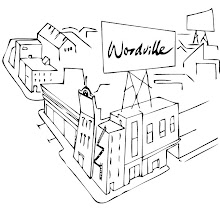
Writing speeches for someone else is an unusual way to spend your time. Finding the right words, weaving in the key points, following a thread to a conclusion. It’s got to be more than an intellectual exercise. You’ve got to find the humour, the passion, something beyond the metre of the words to stir the audience and keep them involved. But when you hand over the pages it’s down to the speaker to make your sentences into something memorable. Those attending the recent event at the V&A’s Sackler Centre were lucky to have Sir Christopher Frayling on hand to kick off the launch of the National Museums Online Learning Project. An excellent engaging speaker, he said what was needed but so much better than anything that could be written on a page.
I enjoy reading speeches – a pleasurable homework to keep my own speechwriting skills up to scratch. But it was a real pleasure this week to stumble on the British Library’s exhibition The Sound and The Fury: The Power of Public Speaking. A row of headphones lets you listen in on some of the greatest speeches given over the last 150 years, drawn from the Newspaper and Sound Archive. The pacing of the great actors, the passion of the sportsmen, the wit and humour of the statesmen. So much better than reading the transcript - the breathing and phrasing makes all the difference. So many of the recordings are famous enough that you can anticipate the words “I am the greatest...”, “Once more unto the breach”, “We shall fight them on the beaches” - but it’s great to hear them spoken.
What makes a great speech? There are certainly some dos and don’ts that can help even the novice to improve. What makes a great speaker? Practice, for sure. But more important is the desire to connect with the audience, to really say something that changes how people feel, that knocks them for six. Engage the audience and they’ll feel lucky to be listening.
I enjoy reading speeches – a pleasurable homework to keep my own speechwriting skills up to scratch. But it was a real pleasure this week to stumble on the British Library’s exhibition The Sound and The Fury: The Power of Public Speaking. A row of headphones lets you listen in on some of the greatest speeches given over the last 150 years, drawn from the Newspaper and Sound Archive. The pacing of the great actors, the passion of the sportsmen, the wit and humour of the statesmen. So much better than reading the transcript - the breathing and phrasing makes all the difference. So many of the recordings are famous enough that you can anticipate the words “I am the greatest...”, “Once more unto the breach”, “We shall fight them on the beaches” - but it’s great to hear them spoken.
What makes a great speech? There are certainly some dos and don’ts that can help even the novice to improve. What makes a great speaker? Practice, for sure. But more important is the desire to connect with the audience, to really say something that changes how people feel, that knocks them for six. Engage the audience and they’ll feel lucky to be listening.
